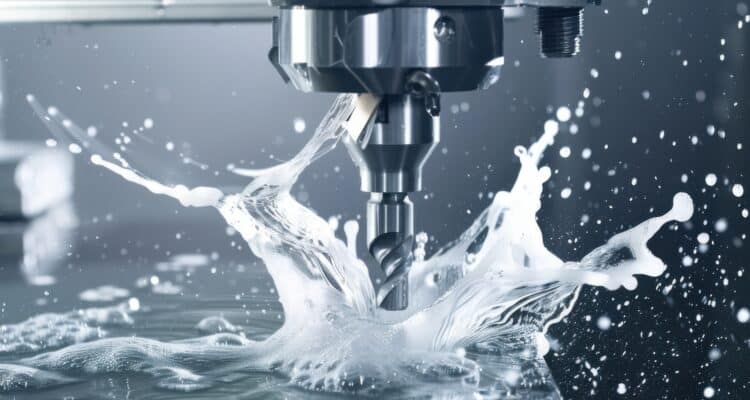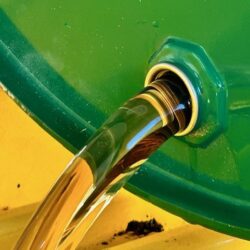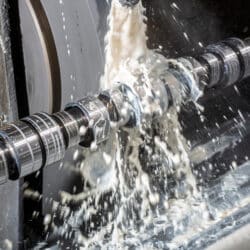Metalworking Fluids Bacteria: Detection, Prevention & Support
Metalworking Fluids Bacteria: Detection, Prevention & Support
Metalworking fluids (MWFs) play a vital role in machining operations, providing lubrication, cooling, and chip removal. However, these essential fluids are also a breeding ground for bacteria. If left unchecked, metalworking fluids bacteria can compromise product quality, damage machinery, and endanger operator health.
In this blog, we’ll break down what bacteria thrive in MWFs, why they grow, how to spot the warning signs, and—most importantly—how to eliminate the problem before it causes major disruption.
What Bacteria Grow in Metalworking Fluids?
Metalworking fluids create a warm, nutrient-rich environment, particularly in water-based fluids. This makes them an ideal habitat for microorganisms such as:
- Pseudomonas aeruginosa – a common gram-negative bacterium that thrives in moist environments.
- Mycobacteria – known to cause respiratory issues when aerosolised in mist.
- Fungi and yeast – though not bacteria, these can also colonise fluids and contribute to biofilm formation.
These microbes feed on oil, tramp oil, and organic contaminants within the fluid, forming resilient biofilms and producing unpleasant odours and sludge.
Why Do Bacteria Grow in Metalworking Fluids?
Several factors promote bacterial growth in MWFs:
- Poor fluid maintenance – neglected fluids accumulate tramp oil and swarf, offering food for microbes.
- Infrequent fluid changes – stagnant or old fluids support microbial colonies.
- Warm temperatures – most bacteria multiply rapidly in warm, humid conditions.
- Incorrect pH levels – when the pH drops, biocides become less effective and bacteria flourish.
Bacteria can double in number every 20–30 minutes in ideal conditions. Therefore, prevention and monitoring are critical.
Signs and Symptoms of Bacterial Contamination
Spotting early signs of metalworking fluids bacteria can save time and money. Look out for:
- Foul odours – a strong “rotten egg” or musty smell suggests bacterial decomposition.
- Discolouration or separation – fluids may appear milky, brown, or layered.
- Sticky or slimy residues – biofilms form along tank walls or piping.
- Poor surface finish on parts – reduced fluid performance impacts machining quality.
- Increased dermatitis complaints – skin irritation among operators can signal microbial contamination.
If you notice any of these symptoms, it’s time to test.
How to Test for Bacteria in Metalworking Fluids
Routine fluid testing is essential. You can monitor bacterial levels using:
- Dip slides – an affordable method that provides a visual indication of bacteria and fungi.
- pH testing – a pH below 8.5 often signals poor biocide performance.
- ATP testing – measures biological activity and identifies high contamination quickly.
- Lab analysis – detailed microbiological testing can identify specific organisms and load levels.
At Kernow Oils, we offer on-site testing and comprehensive analysis of metalworking fluids. Our expert team uses advanced techniques to evaluate the health of your fluids and recommend corrective actions.
How to Control and Eliminate Bacteria in MWFs
Once you identify contamination, act quickly. Here’s how to manage the issue:
✅ Regular Maintenance – Clean sumps, remove tramp oil, and top up fluids with the correct concentration regularly.
✅ Fluid Monitoring – Maintain correct pH, concentration, and biocide levels through routine testing.
✅ Biocide Treatment – Use appropriate biocides to kill existing microbes, but rotate types to prevent resistance.
✅ System Clean-Outs – Periodically clean and flush the entire system to remove biofilms and sludge.
✅ Staff Training – Ensure machine operators understand best practices for fluid handling and hygiene.
Kernow Oils provides coolant management services to help you maintain clean, safe, and efficient systems. We tailor our support to your operations with scheduled maintenance, fluid top-ups, testing, and ongoing guidance.
Why Choose Kernow Oils?
Bacteria in metalworking fluids can cost your business in downtime, machine wear, and operator health. That’s why we offer a full suite of support services, including:
- On-site fluid condition checks
- Bacteria and pH testing
- Fluid health monitoring
- Cleaning and recharging services
- Custom coolant care programmes
Learn more about our metalworking fluid solutions or get in touch to book your on-site visit.
Stay Ahead of Bacterial Contamination
Preventing metalworking fluids bacteria starts with awareness and ends with action. Whether you need emergency testing, long-term fluid management, or technical advice, Kernow Oils has the experience and tools to keep your fluids safe and effective.
- Don’t wait for contamination to disrupt your shop floor. Contact us today to schedule your fluid health check.
Further Reading:

August 7, 2025







